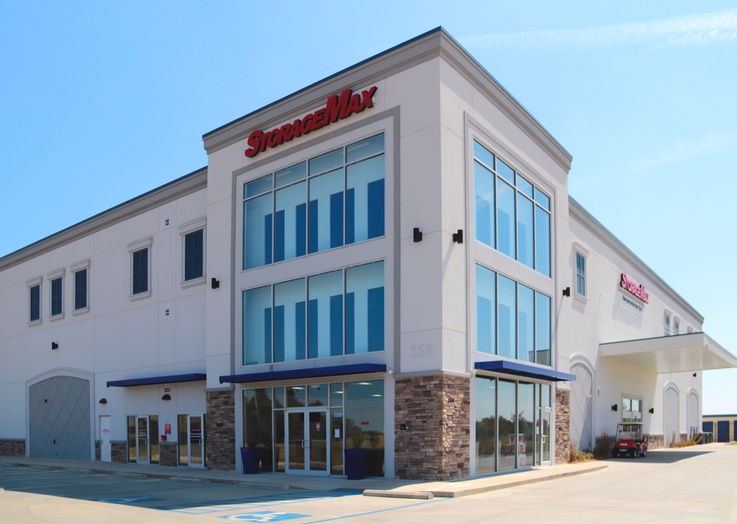The Occupancy Objective: Don’t Leave Money On The Table
There are so many urban legends that just will not die: the Loch Ness Monster, Bigfoot, and aliens at Area 51. Another modern myth, at least within the self-storage industry, is that operators should be striving for 100 percent occupancy.
“There are two camps: the occupancy camp and the rate camp,” says Jeff Helgeson, principal of 180 Self-Storage in Gilbert, Ariz. “We see competitors and independents strive for 100 percent occupancy and brag when they hit that. We look at rate structures; if you’re at 100 percent, you’re leaving revenue on the table. We don’t want to be at 100 percent.”
Clark Porter, Jr., director of data intelligence for The William Warren Group (WWG) in Santa Monica, Calif., agrees. “We operate in modern thinking, and our occupancy is very low, compared to many, even in this past year where others were in the upper-90s occupancy range.”
WWG averages around 90 percent, and Porter emphasizes that every facility has its own “sweet spot” by looking at rates and occupancy per unit size. “It’s natural and instinctive to want to be as full as possible,” he says, “but if we’re at 100 percent, rates are too low.”
Shifting Away From Old Thought
Carol Mixon, president of SkilCheck Services in Tucson, Ariz., says they myth of 100 percent occupancy is a thought process that began when the industry was in its infancy in the 1980s. “Now we have more analytics,” she says, “and we began looking at the larger companies using algorithms to determine their rates based on occupancy, and we see where they make the most is when they have space available.”
In simple terms, Mixon says, “Many operators are so proud of physical occupancy when it is economic occupancy that determines the income, as well as the true value of our stores.”
M. Anne Ballard, president of marketing, training, and developmental services for Universal Storage Group in Atlanta, Ga., provides this example: Imagine you are selling apples and have 100 to sell for the week, Monday to Friday, at the highest profit you can get. If you price them at $2 each, that is $200 total. Perhaps you discount the first 25 percent to get sales going; selling those at $1 equals $25 of sales. They went the first day, and now you are left with 75 for the next four days. On Tuesday, you decide you need to sell at $2.50, hoping to improve profits and you sell another 25 that day (25 x $2.50 = $62.50).
Now it is Wednesday, and you only have 50 apples left for the week. You see the market easily could bear a higher price based on how quickly you sold the apples before, so you decide to sell them at $3 each. That day you sold 20 apples at $3 for a total of $60. On Thursday, you only have 30 apples left and you decide to go for $5 per apple, shining them up and delivering them with a paper napkin. You sell 20 apples that day for a total of $100.
By Friday, you only have 10 apples left to last the entire day. You decide to sell them at $10 each with a bottle of water and a napkin. At the end of the day, you have sold out of 10 apples at $10 each for $100.
Total for the week was 100 apples for $347.50. If you had sold them all for $2 each, you would have lost out on $147.50 in profits. “Storage is the same way,” says Ballard. “If we don’t watch our sales and control our pricing, we give away profits due to lack of pricing power.” She points out that the apples could have easily sold for $5 each, for a total of $500 instead of $347.50 (just by adding a little shine), or $10 each for $1,000.
“What is it that holds back storage operators and the power of pricing? asks Ballard. “Many times it is the myth of wanting to be 100 percent occupied. Some believe that is the best thing, but our example proves that when you are 100 percent occupied you are out of product to sell at any price.”
Making The Most Of Economic Occupancy
Beau Agnello, senior vice president for Pogoda Companies in Farmington Hills, Mich., says there are two ways to ensure your facility is capitalizing on economic occupancy:
- Increasing street rates
- Rental rate increases on current customers
Increasing Street Rates
Each company has its own methods on street rates. Ballard says Universal Storage Group (USG) has a few basic rules:
- When any size code gets to 90 percent or higher occupancy, USG raises the street rate. “Units are just like apples,” says Ballard. “Once you sell out you are left with nothing to sell at any price, so before you run out, raise the rates. It doesn’t really matter if your competitor is cheaper, as the market is telling you they love that size and at that price are globbing them up. You must compare more than price with your competition; consumers most certainly do.”
- Shopping the competition: Are your competitors full? If so, any price they post is negated as they have none to sell. What are their amenities? “Each amenity has an impact on consumers and what they are willing to pay,” explains Ballard, “especially if you are well lighted, fenced and gated, and they are not.” Do you post photos on your website to show how clean and nice your property appears? Do you make it easy to do business, or do you put stumbling blocks in their way? All this and more will affect what consumers will pay for the same unit.
Surveys of USG customers at move-in show only 14.9 percent of their rentals are based on price or specials. “The online shopper is the one most affected by price, not the person who pulls up to your front door on a Saturday afternoon in a loaded U-Haul and needs to move in at that moment,” says Ballard, adding that only 44 percent of their business originates on the web. “Our online pricing strategy is also based on the availability of each unit type. We are not discounting any sizes we are not 90 percent or higher occupied, only ones with availability. Gone are the days when all units got a special every day.”
Raising Rents On Existing Customers
Modern thinking is that if you’re 100 percent occupied on any unit size, you’re probably not raising rents. Industry experts have this message: Stop being afraid of move-outs! “If a guy won’t pay the $10 more for the unit, the new guy moving in will likely pay $15 more for that unit,” says Helgeson.
Helgeson has many examples of his company acquiring facilities and being able to increase profits within a few months. “You don’t want to be the bad guy and raise the rents on day one, so you raise it on a select group,” he says.
Helgeson points to an RV facility they took over that was charging five to 10 percent less on market rates. When 180 Self-Storage came in, they increased the rate structure; occupancy is at 95 percent, but profits are higher.
Mixon provides an example of a facility that went from $40,000 in income to $72,000 in income by raising street and existing rates. Although the facility is no longer 100 percent occupied, its income is still significantly more.
Agnello says there is a way to raise rents on existing tenants without harming your relationship with customers or within the community. “Try to be upfront with customers about market rates when you’re increasing your rates. You must believe you have a great product and great service and point that out,” says Agnello.
USG frames rental rate increases on current tenants who are still receiving discounts as a “notice of discount reduction.” The letter gives them the amount of their current discount and states the discount will decrease in 30 days. The letter also thanks them for their business and reminds them of the referral fee they can receive for referring new customers. “You can even add to the letter, ‘You’re still receiving a (blank) percent discount over new customers renting today,’” says Ballard.
Economic Occupancy Is Important
Everyone is being hit by inflation; it is one thing tenants can understand. Ballard points out that costs have risen dramatically in every expense class for self-storage. USG’s analysis shows that in the past decade, costs have risen from $1.71 per square foot to $2.36 per square foot today, for a total of a 38 percent increase. “This is just one component that must convince us to have our pricing keep up with demand and rising costs,” says Ballard.
Another component includes the cost of new technology and projects both large and small to keep your facility competitive. When you are planning rental increases, make your tenants aware of any upgrades you’ve made to the facility. “Even if you aren’t doing major upgrades, paint, keep your facility clean, and make sure your gates and technology are all functional,” says Mixon.
Income Is Key
One last thing: If you’re an owner, quit tying your manager’s performance bonus to physical occupancy. “Hold them to an increase in income,” says Mixon. “And if you’re a manager, advocate to your owner and show them you can increase income by finding the sweet spot with occupancy.”
If rental rates and occupancy are balanced correctly, physical occupancy may even come down a point or two while income continues to rise. “You don’t have to fill as many spaces to increase your income and the worth of your facility,” says Helgeson.
More Content
Popular Posts
Recent Posts
When Germantown High School in Gluckstadt,...
It’s comforting to know that no matter how...
A very wise self-storage expert once said...
Senate Bill 709 (SB709) has many in the...
In January, self-storage industry veteran...
In April 1984, the first non-stop commercial...
Raise your hand if you’ve ever made plans,...
Everyone knows it: Investing in real estate...









